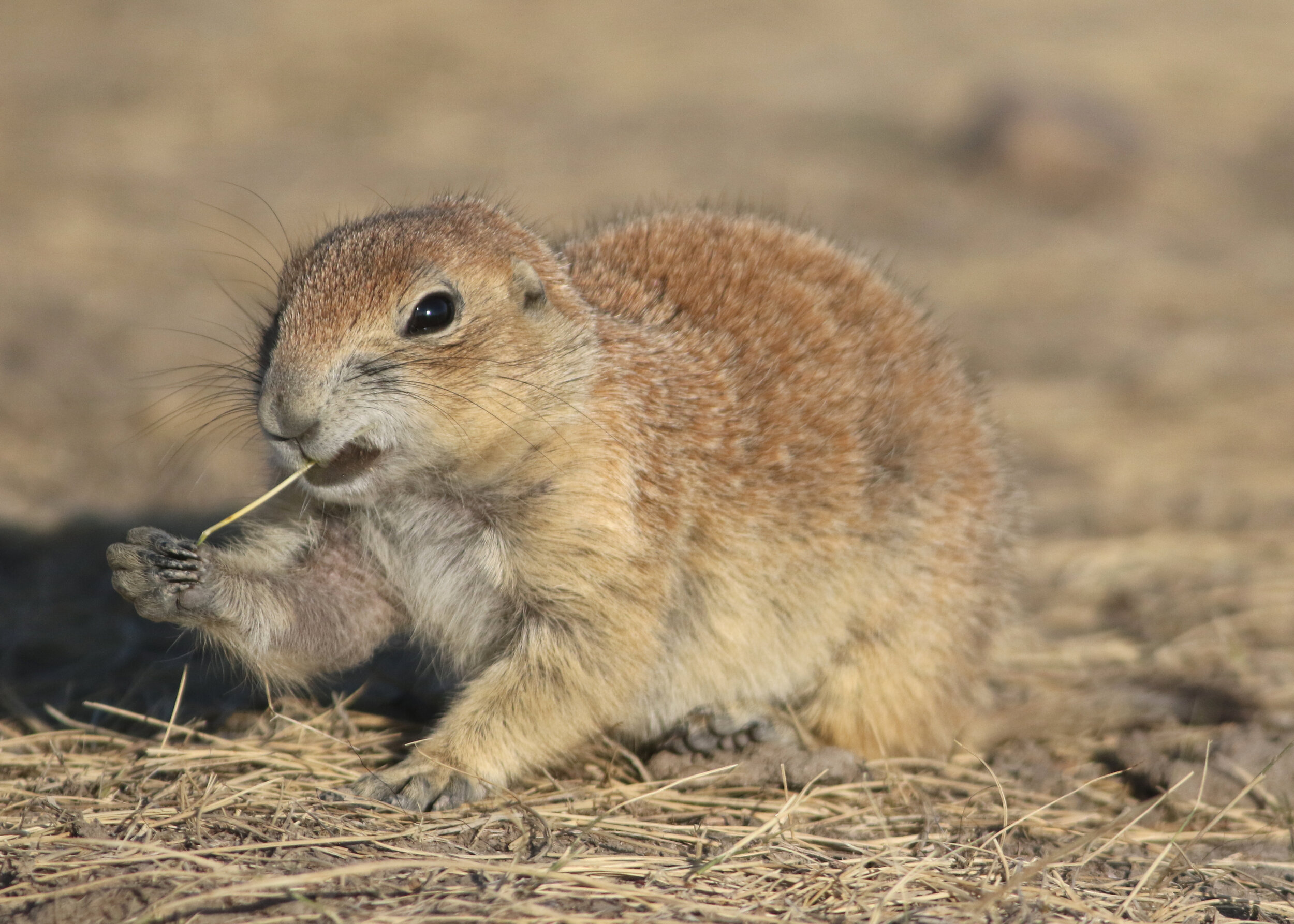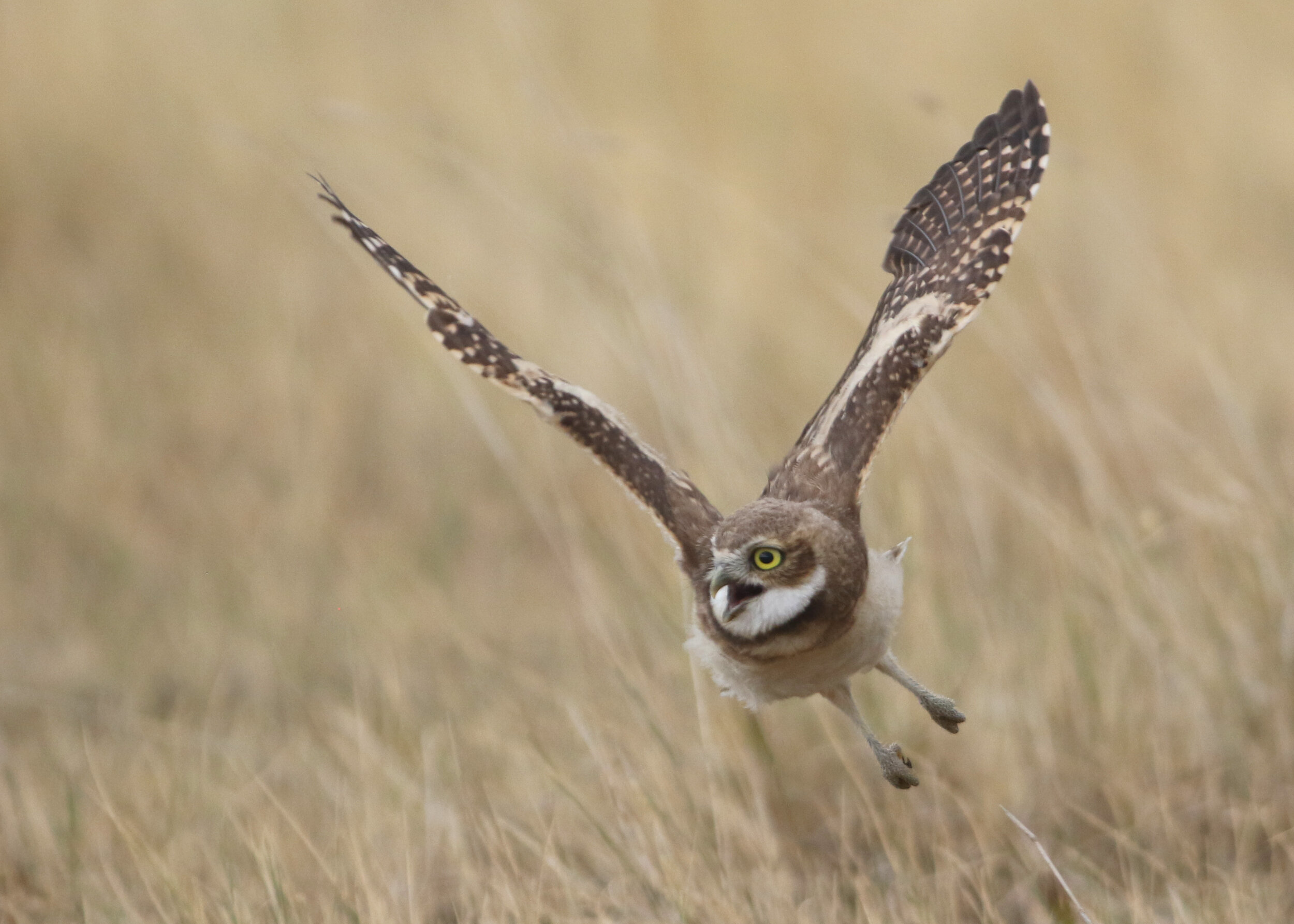Burrowing Owl, Athene cunicularia
Burrowing Owls have, in my opinion, the greatest range of facial expressions you could ask for. I love how one owl can look like a space case while another looks like it needs coffee asap. It is amazing how such tiny owls (only 9 inches in height) can have such big expressions!
Unlike most owls, Burrowing Owls are diurnal. They make their nests in abandoned burrows dug by other animals, especially prairie dogs. Burrowing Owls are very comfortable on the ground; in fact, they more often run and flatten themselves against the ground than fly to escape enemies.
When we got to Badlands National Park in mid-July, we found prairie dogs everywhere. They were so numerous that their burrows went right up to the road, and we could see how unbelievably adorable they are up close. I was delighted to see young, cream colored prairie dog pups alongside the older rusty ones. After squealing over the prairie dogs for a good while, we turned our attention to the fields beyond them, looking for Burrowing Owls amongst the burrows.
Black-tailed Prairie Dog, Cynomys ludovicianus
I had seen a single Burrowing Owl back in September 2016 in the fields just beyond Robert’s Prairie Dog Town. We were disappointed when we did not find any in this section, but kept driving forward figuring we would continue to look until we reached the park boundary. To our delight, just as we reached the intersection where the road veered north to head to Wall, a herd of bison began cresting the hill on the side of the road. There were dozens of them. Male bulls harassed females who were more interested in watching their young red calves; the young calves were often more interested in playing with each other. We followed the bison at a safe distance, and were suddenly flabbergasted when Burrowing Owl after Burrowing Owl appeared as if out of nowhere and began flying through the fields about thirty feet from us. Western Meadowlarks, Horned Larks, and prairie dogs were also running through the grasses ahead of the bison. It dawned on me that the march of the bison was disturbing the Burrowing Owls and causing them to flush! The whole spectacle felt like the North American edition of the opening to Disney’s The Lion King. It was truly breathtaking and spectacular.
Mother and calf
Bull Bison, Bison bison
Two younger bison playing
After the bison had passed, we went back to look for the owls more closely. They are so well camouflaged against the brown and golden grasses of the Badlands that we almost missed them again- until we noticed an adult Burrowing Owl diving into the grass with food. Unbelievably, we found a series of burrows about fifteen feet from the side of the road, complete with two young Burrowing Owl fledglings. They were old enough to fly, but still apparently young enough to beg for food from the parents. The younger birds were much less spotted than the adults, and still a bit fluffier. We watched the birds for about an hour before the winds kicked up and threatened rain and the owls hunkered down in their burrows.
Adult Burrowing Owl
Young Burrowing Owl in flight
Takeaway Tips: The Badlands in the summer are hot. It hit over triple digits on the car thermometer, and this was early on in the day. We were fortunate to have cloud cover from 10AM onward, or we may have cooked. We got to the Badlands at sunrise so we would have the best chances for birds and to stay cool. Even though it is really, really hot in July, if you can stand the heat, the young animals are worth it. There are young animals everywhere and they are adorable!
One of the best places to see Burrowing Owls consistently seems to be the section around Robert’s Prairie Dog Town, which makes sense there are hundreds of pre-made burrows for the owls to take advantage of. Now I know that bison proximity can make a difference in seeing one of these owls, and it makes sense- if I had a herd of bison marching over my roof, I would get out of the house too!
Badlands National Park Trip List:
Mammals- Bighorn Sheep, Bison, Black-tailed Prairie Dog, Black-tailed Jackrabbit
Birds: Burrowing Owl, Black-billed Magpie, Western Meadowlark, Horned Lark, Sharp-tailed Grouse, Mourning Dove, American Kestrel, Turkey Vulture, Red-tailed Hawk, American Pipit






